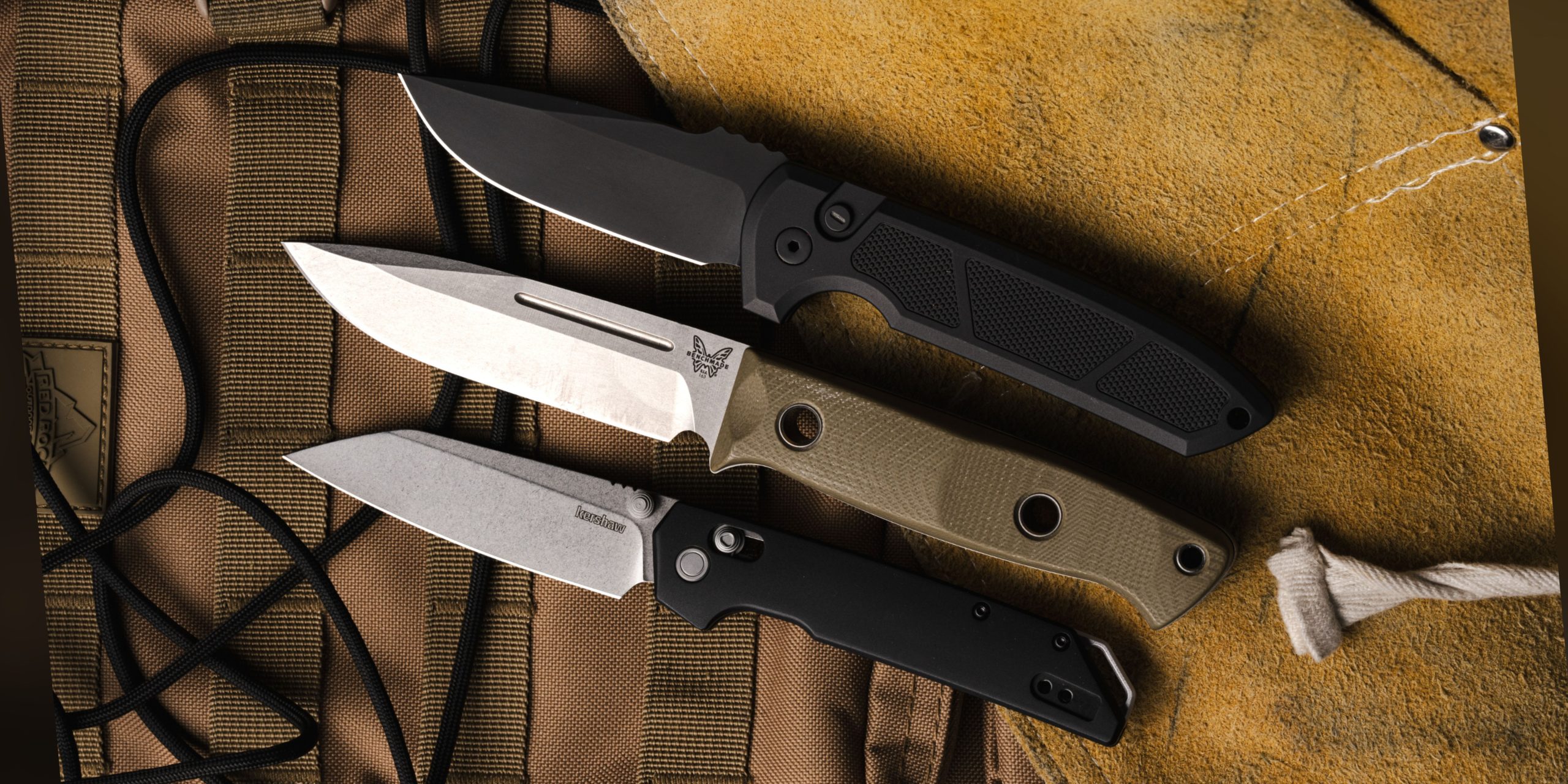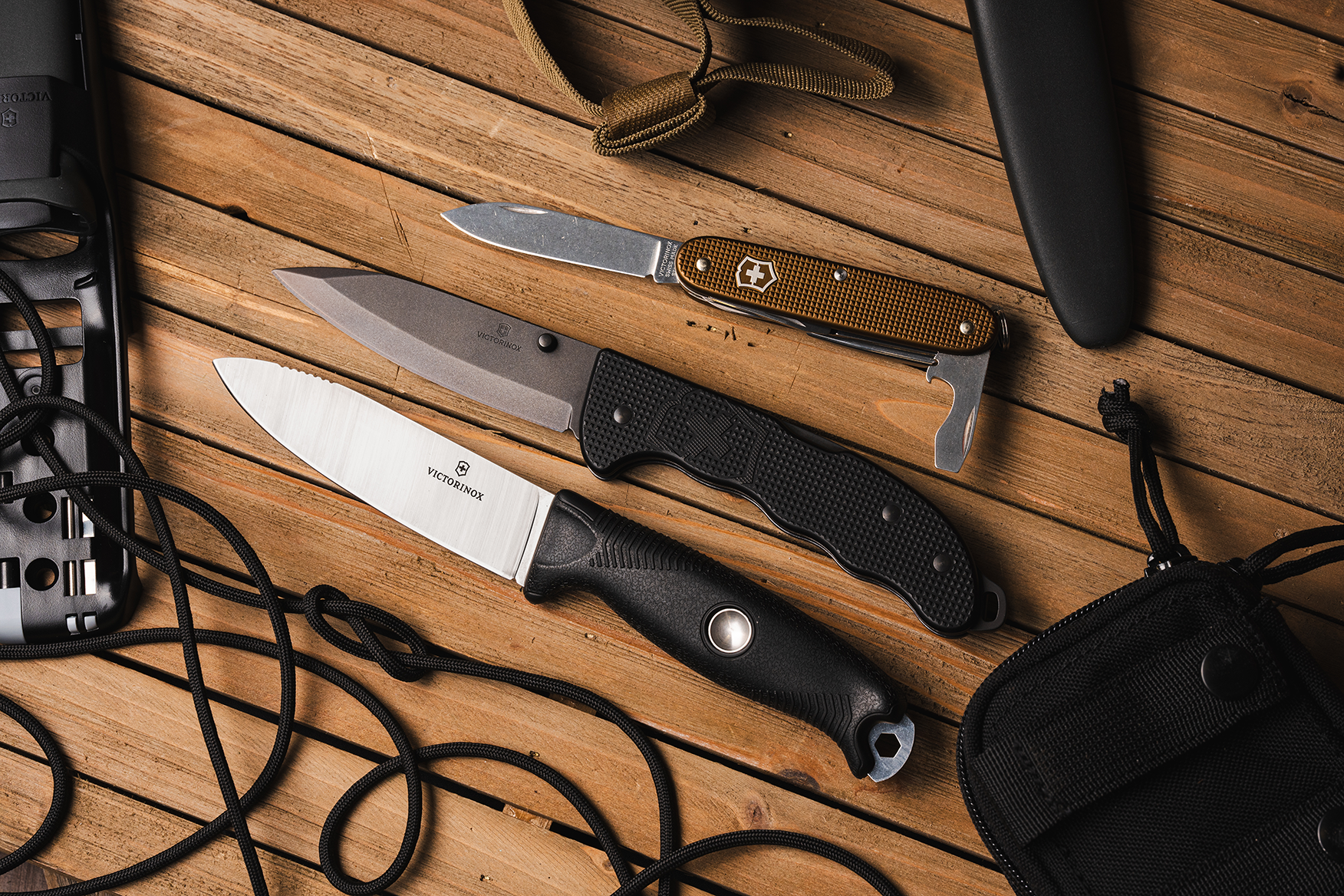Welcome to part two of our knife locking mechanism infographic. You have officially advanced from generic locking mechanisms to brand-specific ones. Congrats.
As usual, this infographic doesn’t include every locking mechanism from every brand, but it does include the locking mechanisms we felt were the most common.
Enjoy, be enlightened, and let your knives live long and prosper.
 Benchmade’s AXIS® lock system is located just inside the knife handles and is incorporated into the steel liners. A steel rod rests in a slot in the steel liners and continues from one side of the knife handle and through to the other side. The spring-loaded steel rod slides back and forth, and when the blade is open, the rod locks in place in a small notch at the tang of the blade, and a stop pin is used to wedge the tang in place, as well. (In the AXIS® lock, there are two omega-style springs, one on each liner.)The rod must be pulled back to the side again for the blade to free up and close.
Benchmade’s AXIS® lock system is located just inside the knife handles and is incorporated into the steel liners. A steel rod rests in a slot in the steel liners and continues from one side of the knife handle and through to the other side. The spring-loaded steel rod slides back and forth, and when the blade is open, the rod locks in place in a small notch at the tang of the blade, and a stop pin is used to wedge the tang in place, as well. (In the AXIS® lock, there are two omega-style springs, one on each liner.)The rod must be pulled back to the side again for the blade to free up and close.
The Benchmade Griptilian is one knife that feature’s Benchmade’s AXIS® lock.
 *The knife pictured above actually shows SOG’s Arc-Actuator™, which is featured in knives like the SOG Trident.
*The knife pictured above actually shows SOG’s Arc-Actuator™, which is featured in knives like the SOG Trident.
The Arc-Actuator™ utilizes a stop pin that slides sideways, back and forth, in order to lock the blade in place. To release the blade, the lever that connects to the stop pin must be pulled back. This system allows the user to release the blade easily without exerting too much effort, despite the spring on the stop pin.
 This system utilizes a ball bearing, and it has similarities to the concept of the AXIS® lock; when the knife is open, constant pressure from a spring keeps the ball bearing wedged between a notch in the tang of the blade and a fixed anvil.
This system utilizes a ball bearing, and it has similarities to the concept of the AXIS® lock; when the knife is open, constant pressure from a spring keeps the ball bearing wedged between a notch in the tang of the blade and a fixed anvil.
The Spyderco Manix 2 is one knife that feature’s Spyderco’s Ball Bearing Lock.
 The Tri-Ad® is similar to a back lock, but it uses a stop pin in addition to a rocker arm. The stop pin keeps the blade from moving, and the rocker bar keeps the blade from closing when there’s pressure on the blade’s spine.
The Tri-Ad® is similar to a back lock, but it uses a stop pin in addition to a rocker arm. The stop pin keeps the blade from moving, and the rocker bar keeps the blade from closing when there’s pressure on the blade’s spine.
The Cold Steel Tuff Lite is one knife that feature’s Cold Steel’s Tri-Ad® lock.
 From the outside the Compression Lock looks similar to a liner lock, except the piece of metal that you push on is located on top of the knife handle, not the bottom. When the knife is open, the piece of metal comes in from the side to rest between a notch in the blade’s tang and a stop pin that is located on top of the piece of metal. The blade can only be unlocked if the piece of metal is pushed to the side and out of the way of the blade.
From the outside the Compression Lock looks similar to a liner lock, except the piece of metal that you push on is located on top of the knife handle, not the bottom. When the knife is open, the piece of metal comes in from the side to rest between a notch in the blade’s tang and a stop pin that is located on top of the piece of metal. The blade can only be unlocked if the piece of metal is pushed to the side and out of the way of the blade.
The Spyderco Paramilitary 2 is one knife that feature’s Spyderco’s Compression Lock.
What’s your favorite locking mechanism? Be sure to let us know what you think about this knife locking mechanism infographic in the comment section below! For a more in-depth look into lock types, check out our Knife Lock Types Guide from Learn Knives.
3 thoughts on “Pocket Knife Lock Types Infographic Part II”
Comments are closed.




What type of lock does Smith and Wesson use?
Hey there!
I asked some knowledgeable knife gurus , and it doesn’t seem like Smith & Wesson has a locking mechanism of their own that they developed. Hope that helps. Let us know if you have any more questions!
Hey Kaylene,
What a useful infographic. Really nice stuff! 🙂
Regards,
Jay